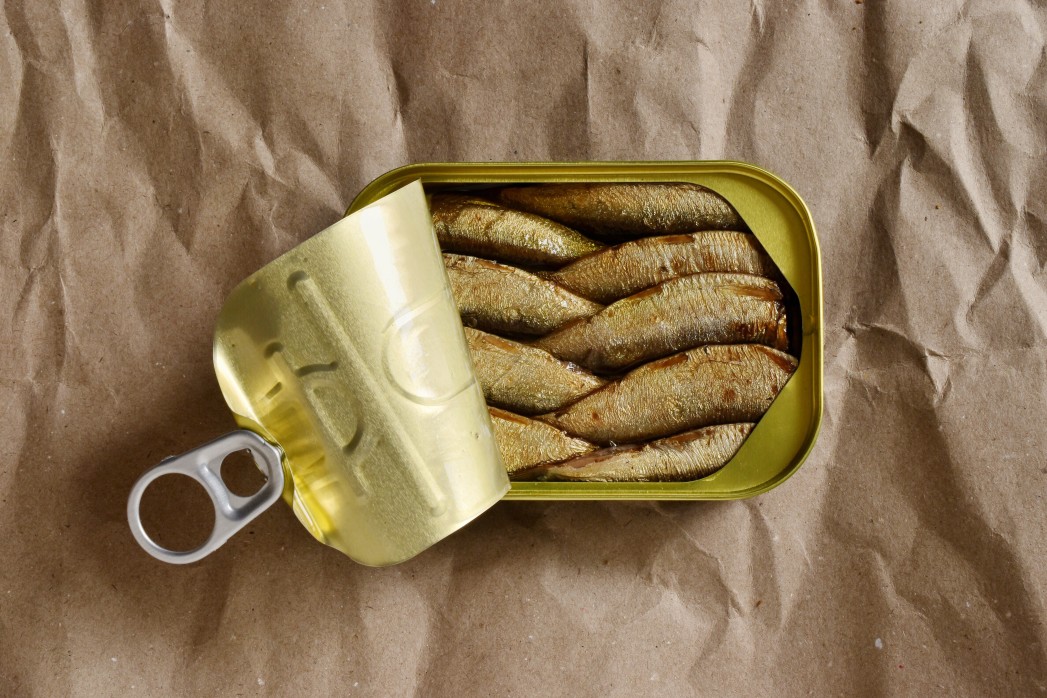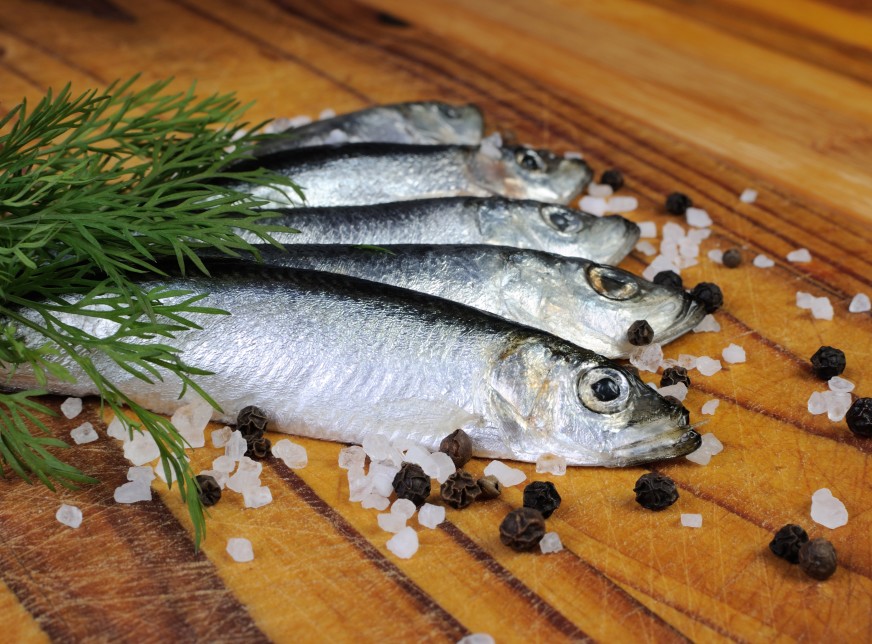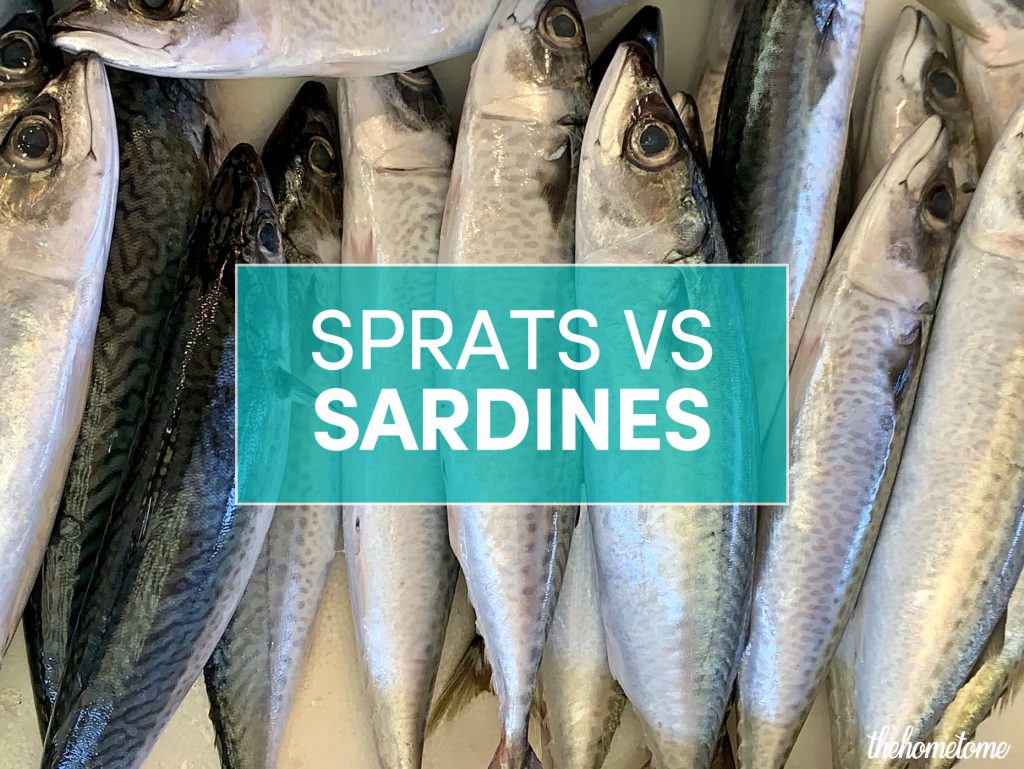Although Sprats and Sardines belong to the same species known as the herring family, there are slight differences between them. Sprats can also be referred to as bristlings and are found in Australia, Europe, South-West Atlantic, and New Zealand. They are about 9-15cm long and are preserved in cans using brine or Olive oil.
Sardine is a type of oily fish that is part of the herring species. They contain omega-3 fatty acid which is rich in vitamins, protein, minerals and offers health benefits.
Sardines are preserved in cans like sprats and they could be smoked, or eaten fresh. The Mediterranean, Atlantic oceans are the water bodies where you can find sardines. They are about 12 inches long and are whitish.
Mercury is a common toxin found in fishes. Sardines contain a low amount of Mercury and a higher amount of other types of toxins. This should not bother you as it also contains more nutrients. It contains 24.5g of protein, 11.3g of fat,2.3g of Omega-3, 206.25 calories.
It is advisable to reduce your consumption of sardines as a result of these toxins present in them.
The main difference between sprats and sardines is their nutritional composition. Sprats are loaded with essential nutrients and sardine is more loved for its taste. However, both are extremely perishable items, hence you need to enjoy them fresh and learn how to store them properly.
Health Benefits of Eating Sprats
- Source of Vitamin D: 3 mcg of vitamin D are contained in 100g of Sprat. The nervous and immune systems make use of vitamin D to function properly.
- A small concentration of Mercury: Mercury is toxic to human health. A high concentration of Mercury is found mostly in bigger fishes in the sea. Sprats feed on smaller organisms like zooplankton. Thus, the level of Mercury in sprats is low.
- Source of Vitamin B12: Vitamin B12 is one of the recommended vitamins for an anemia patient. It also gives more energy to the body. Sprats contribute 548% of Vitamin B12 to the body
- Rich in Selenium: The Antioxidant system in the body gets a boost when selenium is taken into the body. Sprats when consumed contributes to the level of selenium.
- Nutritional value: Sprats are packed with a large number of nutrients. That’s why it is advisable to eat it as a whole.
Health Benefits of Sardines
- Source of Vitamin B: Vitamin B supplies the body with energy. A deficiency in this vitamin can result in cardiovascular diseases. Consuming sardines will reduce the risk of contracting these diseases.
- Source of important minerals: The human body can’t do without magnesium, calcium, phosphorus, and many other minerals. For instance, most of these nutrients are responsible for strong bones and teeth,
- Omega-3 fatty acids: Omega-3 fatty acids are a common nutrient in fish. Sardines contain these fatty acids. It promoted the proper circulation of blood in the body.
- Low Mercury content: Generally, Mercury is present in most fishes and can be detrimental to health. Although the bigger fishes in the sea harbor more Mercury content. Smaller fishes like sprats and sardines are at a lower risk of accumulating this toxin. The fishes get this Mercury via pollutants released into the water body. Sardines consume harmless organisms like Zooplankton which has no Mercury in its flesh. Pregnant women are advised to eat more sardines because of the numerous benefits it contributes.

Which Is Healthier?
Sardines and Sprats have many health benefits to offer and contain a lot of nutrients. Both also contain Mercury. Although, sardines and sprats are said to contain an insignificant amount of Mercury. Sardines contain some amount of toxins that can be dangerous to the body.
FDA recommends that Sprats should be consumed more often because it is healthier than sardines.
Differences Between Sprats and Sardines
Sprats and sardines belong to the same species but there are slight differences between them. These differences are highlighted;
- Sprats are smaller in size compared to sardines.
- Sprats offer more nutritional value
- Sprats are silver-grey while sardines are somewhat grey but a lighter shade of grey. Some sardines are whitish.
While sprats and sardine are both popular canned fish and are often mistaken for each other, their health benefits differ. The strong meaty taste of sprat might not be for everyone though, but it works in lots of healthy recipes. Sardine is just as nutritious as sprats and also it contains fewer calories.
Furthermore, both sprats and sardine contain excess sodium. But not to worry, you can have them soaked and rinsed before using them in your meal in order to remove the excess calories.
Frequently Asked Questions
There are commonly asked questions on the differences between sprats and sardines. Find the answers below;
Where do sprats come from?
Sprats originated from the following parts of the world; Europe, New Zealand, Australia, and South-West Atlantic. However, there is a higher habitation of sprats in Europe. The species of sprats “Sprattus sprattus” are common in the Baltic sea. Sardines are found in the Atlantic and Mediterranean Oceans.
Likewise, do sprats taste like sardines?
Sprats belong to the same family as sardines. Sprats are canned as a whole while the head and gills of sardines are removed for better quality. The parts of sprats taste alike and are soft when eaten. Sprats taste better than sardines. They contain more nutritious content.
Similarly, what is the difference between sprat and sardine?
Sprats and sardines are both preserved in cans filled with olive oil. The European sardine possesses some similarities with the American sardine. Sardines are the youngest of the herring species. Sprats are smaller in size and are less harmful to the body. Sardines contain some amount of toxins and are recommended in small amounts. Sprats are silvery while sardines can be silvery or whitish.
What is the difference between sardines and Brisling sardines?

Sprats have so many descriptions. One of which is Brisling. Brisling sardines are known as sprats. You will find them mostly in cold water. Brisling sardines contain more omega-3 fatty acids compared to sardines. This implies that sprats (Brisling sardines) have more nutritious content than Sardines.
Can you eat the bones in sprats?
The quality of sardine is determined by the removal of the head and gills. Sprats don’t need to be gutted before they can be eaten. You can consume them as a whole without having to worry about the bones. The bones are a source of calcium and are soft when eaten.
Do I need to gut sprats?
If you feel nauseous while eating sprats as a whole, then you need to gut them. Simply instruct the fishmonger to gut the fish before marinating. Although, it is not compulsory to separate the head from other parts of its body as they are nutritious. Sardines have to be gutted to get the best of it.
Are sprats an oily fish?
All fishes contain oils. One of the common oils in fish is Omega-3 fatty acids. Sardines contain Omega-3 fatty acids which offer some heart benefits. The concentration of omega-3 fatty acids is higher in sprats than in sardines. Thus, sprat is an oily fish.
Can dogs eat sprats?
Sprats have no harmful effect on dogs. They will contribute greatly to its health. Dogs should eat more sprats than any other seafood. Sprats offer them more nutritious value. It also improves the taste of their food and makes them healthier for consumption.
Are canned sardines cooked?
Before sardines are canned, they undergo some cleaning processes so they can be healthier for consumption. Firstly, the fish are cleaned with water, the heads and gills are eviscerated, after which they are deep-fried, steam cooked, dried, and preserved in olive oil in cans.
How do you make sprats?
Add some flavor to the sprat by spicing it with salts and pepper. Heat the grilling machine for some minutes and place the fish on it. Allow it to cook then remove it when it’s brown.
How many minutes does it take sardines to cook?
Sardines have soft bones. Cooking should be done in under 2 minutes.
What are dried sprats?
Sprats can be preserved by air-drying. It contains 21.3% of fats and oil, 53.2% of protein, and 17.3% of Ash after it has been air-dried.
Are sardines good for you?
Sardines, just like sprats, offer nutritional value. They are rich in Omega-3 fatty acids, vitamin B12, and calcium. Yes, sardines are good for your consumption.
How do you eat Sprat fish?
With the use of a knife, slit its stomach and remove the intestines. Pull the gills and remove them then wash with water and spice the fish. The same method applies to sardines.
What are the four fish that should never be eaten?
Some fishes are dangerous to your health. These fishes including Atlantic Bluefin, Yellowfin, and tuna should not be eaten.
Do sprats have scales?
Sprats or Brisling sardines have scales on their body. Sardines also have scales even though their scales are soft. These scales can be consumed too as they will cause no harm to the body.
What type of fish are sprats?
Sprats are also called brislings, skippers, whitebait and are one of the most nutritious fishes in the sea. You can identify it with its silver-grey scales.
Conclusion
It is not unusual for sardines and sprats to have so many similarities. Both fishes belong to the same family (Clupeidae family).
They both contain Omega-3 fatty acids which offer nutritional value and health benefits. Both are highly nutritious but there is a higher concentration in Sprats. The no-so-much difference between sardines and sprats is in the size of the sprats. Sprats are smaller than sardines in size.
If you want to raise the level of Omega-3 in your body, eat sprats often.
Continue reading:

